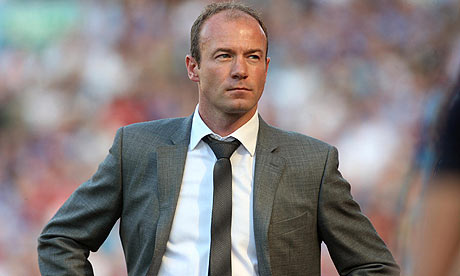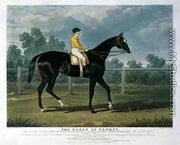Taking a tour by bicycle with your children is both a fun and satisfying adventure for both you and your children. Children from toddler size and up can enjoy cycling as long as certain precautions are taken. There's always the beautiful open scenery, fresh air and great exercise to be enjoyed while cycling.
Following safety rules and being prepared for potential hazards is the key to having a fun, but safe bicycle tour
with your family. Below are some tips to help you prepare in advance for taking your children along on your next bicycle tour.
Taking the Toddlers
If you have one or more toddlers that you'd like to take along for the ride, there are two options for safely carrying your toddler. Trailers are a great way to allow your toddler to safely tag along behind you. Trailers are attached to the back of your bicycle and normally can carry two children. There are many convenient safety features that make trailers appealing to parents, such as the cover flaps which protect the children
from flying objects. Some trailers have removable weather covers as well. Trailers are designed to remain upright even if the bicycle wrecks or flips. The bicycle balance is usually not affected by the trailer, which is an added benefit for new riders.
There are two disadvantages to using a trailer. First, trailers can be quite expensive, especially when it offers all the safety features. Secondly, trailers have a very bumpy ride for the child. The bumpy ride might be fine for a child with no health problems, but hazardous if a child does have certain conditions. If you plan to do frequent bicycle trips with your toddler, a trailer might be the best route.
Another option for toddlers is the child carrier seat, which mounts to either the front or back of the bicycle. The most popular seats attach to the rear because most parents feel that having the child behind them is more secure. The greatest advantage of a carrier seat is the closeness of the child to the parent. There are some dangers of carrier seats, such as the imbalance it causes, and new bikers will probably not want to attempt using a carrier with their child for this reason.
No matter which option you choose, always follow common bike safety rules such as wearing a helmet (both you and your children), keeping good maintenance on the bicycle so it will be in top condition when riding, and making sure the carrier or trailer is properly and tightly attached. Also, beware of placing any loose items in the hands of your child while riding. A blanket could easily fall and get caught in your spokes, causing a wreck. Toys or sipping cups can also be a hazard. It's best not to allow the child to hold anything while riding. If you carry along a drink for your child, stop along the side of the road while the child drinks.
Bicycle Touring with Your Older Children
If you have children who are old enough to ride their own bicycles, there are still some safety guidelines to follow for their protection as well. Choosing the appropriate bike for your child is the number one step in safety. The wrong size or style of bike for your child could spell disaster while riding. Don't base your choice solely on color or bike theme, but also design, dependability and mobility.
Never get a bike that's too large for your child with the mentality that he/she will grow into it. If your child
will be riding the bicycle now, then choose one that fits his/her size right now. This is vital to your child's
health and safety. A bike that's too large will be very difficult to pedal and too heavy to handle.
How to Determine if a Bike is the Right Size
Allow your child to sit on the bike (and ride if possible) before buying. Your child should be able to reach all controls, pedals and brakes comfortably. The ball of the foot should touch the floor while sitting on the bike's seat. If your child has to stretch to reach the ground or the pedals, then the bike is too large. Although most bikes state a "suitable" age, you should always measure according to the size because every child is different.
A nine-year-old girl might be four feet tall and weigh 100 pounds, while another nine-year-old might be three feet tall with a weight of 70 pounds. There are vast differences in the height and weight of children, so choose the bike that fits your child's size.
Make sure your child wears the necessary protective items while riding, such as a helmet and pads. Be sure to keep good maintenance on your child's bike between trips.
Teaching Your Child the Rules of the Road
One way to make your bicycle tours more interesting is to teach your child rules of the road along the way. Learning while riding is much easier than learning beforehand for a child, although there are some very urgent rules that should be discussed before getting on the bicycle. While touring you can blend fun and adventure with instructions for safe riding.
Bicycle touring with your children can be a great way to exercise, see great sights and fellowship with your family.
Following safety rules and being prepared for potential hazards is the key to having a fun, but safe bicycle tour
with your family. Below are some tips to help you prepare in advance for taking your children along on your next bicycle tour.
Taking the Toddlers
If you have one or more toddlers that you'd like to take along for the ride, there are two options for safely carrying your toddler. Trailers are a great way to allow your toddler to safely tag along behind you. Trailers are attached to the back of your bicycle and normally can carry two children. There are many convenient safety features that make trailers appealing to parents, such as the cover flaps which protect the children
from flying objects. Some trailers have removable weather covers as well. Trailers are designed to remain upright even if the bicycle wrecks or flips. The bicycle balance is usually not affected by the trailer, which is an added benefit for new riders.
There are two disadvantages to using a trailer. First, trailers can be quite expensive, especially when it offers all the safety features. Secondly, trailers have a very bumpy ride for the child. The bumpy ride might be fine for a child with no health problems, but hazardous if a child does have certain conditions. If you plan to do frequent bicycle trips with your toddler, a trailer might be the best route.
Another option for toddlers is the child carrier seat, which mounts to either the front or back of the bicycle. The most popular seats attach to the rear because most parents feel that having the child behind them is more secure. The greatest advantage of a carrier seat is the closeness of the child to the parent. There are some dangers of carrier seats, such as the imbalance it causes, and new bikers will probably not want to attempt using a carrier with their child for this reason.
No matter which option you choose, always follow common bike safety rules such as wearing a helmet (both you and your children), keeping good maintenance on the bicycle so it will be in top condition when riding, and making sure the carrier or trailer is properly and tightly attached. Also, beware of placing any loose items in the hands of your child while riding. A blanket could easily fall and get caught in your spokes, causing a wreck. Toys or sipping cups can also be a hazard. It's best not to allow the child to hold anything while riding. If you carry along a drink for your child, stop along the side of the road while the child drinks.
Bicycle Touring with Your Older Children
If you have children who are old enough to ride their own bicycles, there are still some safety guidelines to follow for their protection as well. Choosing the appropriate bike for your child is the number one step in safety. The wrong size or style of bike for your child could spell disaster while riding. Don't base your choice solely on color or bike theme, but also design, dependability and mobility.
Never get a bike that's too large for your child with the mentality that he/she will grow into it. If your child
will be riding the bicycle now, then choose one that fits his/her size right now. This is vital to your child's
health and safety. A bike that's too large will be very difficult to pedal and too heavy to handle.
How to Determine if a Bike is the Right Size
Allow your child to sit on the bike (and ride if possible) before buying. Your child should be able to reach all controls, pedals and brakes comfortably. The ball of the foot should touch the floor while sitting on the bike's seat. If your child has to stretch to reach the ground or the pedals, then the bike is too large. Although most bikes state a "suitable" age, you should always measure according to the size because every child is different.
A nine-year-old girl might be four feet tall and weigh 100 pounds, while another nine-year-old might be three feet tall with a weight of 70 pounds. There are vast differences in the height and weight of children, so choose the bike that fits your child's size.
Make sure your child wears the necessary protective items while riding, such as a helmet and pads. Be sure to keep good maintenance on your child's bike between trips.
Teaching Your Child the Rules of the Road
One way to make your bicycle tours more interesting is to teach your child rules of the road along the way. Learning while riding is much easier than learning beforehand for a child, although there are some very urgent rules that should be discussed before getting on the bicycle. While touring you can blend fun and adventure with instructions for safe riding.
Bicycle touring with your children can be a great way to exercise, see great sights and fellowship with your family.





















